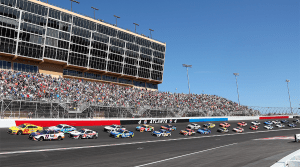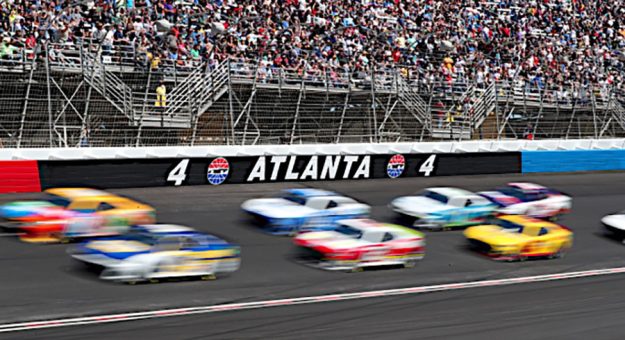After 18 races at 18 different tracks, the NASCAR Cup Series finally makes its first repeat visit of the season.
And it’s not to just any old race track on the circuit.
Four months after its debut, the repaved and reconfigured Atlanta Motor Speedway is back for a shorter, hotter encore.
The Cup Series races on the superspeedway-ized Atlanta for a second time in Sunday’s Quaker State 400.
The race is scheduled for 260 laps and will be run in roughly 85-degree heat with up to a 50% chance of rain during the afternoon.
According to new Cup winner Tyler Reddick, running 180 mph around the 1.54-mile track non-stop “really drains you mentally” compered to what drivers experience at the 2.5-mile Daytona International Speedway and 2.66-mile Talladega (Ala.) Superspeedway.
“I was surprised after (the March) race by the physical toll that it had,” Reddick said in a media release. “Normally speedways like Daytona and Talladega are a mental drain, but it seemed like Atlanta was both. It’s going to be hotter when we go back this weekend with our ALSCO Uniforms Chevrolet so it’s going to be even more of that.”
One major difference between Atlanta’s two races this season is teams won’t have practice sessions this weekend to help figure out their cars.
Teams will just qualify Saturday and then turn around and race the next day.
This could impact a race seen as being more about the handling of the car compared to the larger superspeedways.
“We need our car to be very efficient in the air and the least amount of drag and still have grip, and not be too loose or tight,” said Ross Chastain, who led 42 laps and finished second in March. “You’re going to fight the handling at Atlanta because the corners are so much tighter than Daytona and Talladega. We don’t really fight handling too much at those two tracks. Atlanta is a place you’ll still need to handle well. Without practice at Atlanta, we need to handle good or we will be in trouble and we’ll be swinging at it in the race if that’s the case.”
Brad Keselowski, who has six Talladega wins and one points win at Daytona, believes the race will look “probably more like Daytona.
“Talladega is certainly completely wide open. Where Atlanta is going to be a little bit lifting and a little bit of managing your car. More so than Talladega.”
Rudy Fugle, crew chief for March winner William Byron, said some of the notes his No. 24 team has from the early race “will definitely transfer” to this weekend.

Fugle compared the difference in what teams may see to the changes from the Daytona 500 to the August race at Daytona.
“The track has been sitting in the sun and baking since we were there last,” Fugle said. “It’s much cooler the first time we race at Daytona and then handling becomes a bigger factor in the summer race. We’ll still be drafting this weekend, but track grip will be down and handling will play a bigger role.
“Since we don’t have practice this time around, I think more guys will show up guessing a little bit on their handling to start the race. I think there will be more ebbs and flows of who is good at the start and then who is good at the end once they have some time to work on their cars. It’s going to be more about who can keep up with track conditions while being around at the end of the race to give yourself a shot.”
One surprise element that defined the March race was a spree of rear-tire failures throughout the event by drivers up front.
Chastain, Reddick and Ricky Stenhouse Jr. had a tire go down while they raced in the middle of a turn or were in the process of exiting.
The incidents typically resulted in multi-car wrecks, but Chastain’s instance only saw him get into the outside wall in Turn 2. The durability of the Next Gen car allowed the Trackhouse Racing driver to stay in the race and rebound to his runner-up finish.
Goodyear has engineered the Atlanta tire set-up with the expectation of low tire wear on the repaved surface by having less gage (thickness) in the tread in order to dissipate some of that heat.
“Teams have had four months to learn this car, study this package and improve their cars,” said Greg Stucker, Goodyear’s director of racing, in a media release. “The challenges that Atlanta now present have not changed since the last race in March, and along with the repave and increase in banking, the smooth track surface will not naturally wear tires much at all. Tire wear and the dissipation of heat is important in racing because as the tire wears, it sheds rubber and that helps keep the tire cooler and performing at a more optimal level.”
